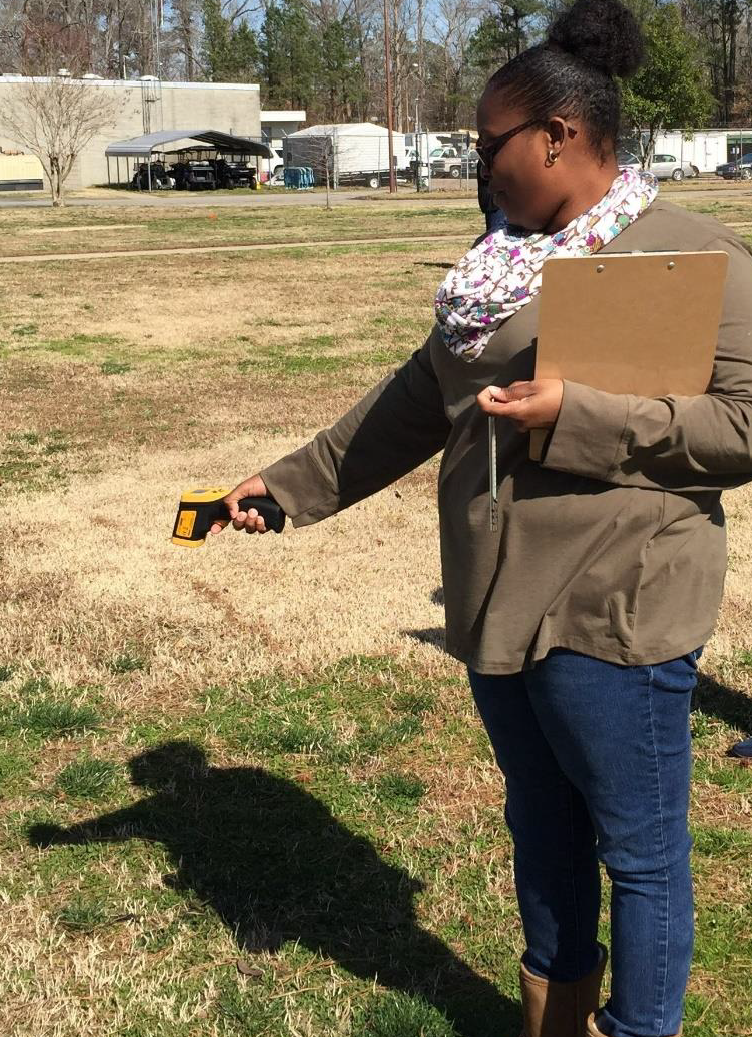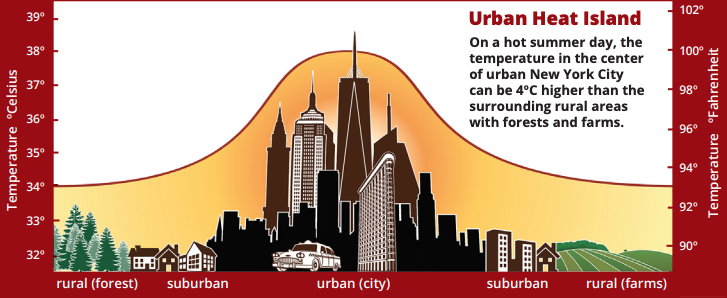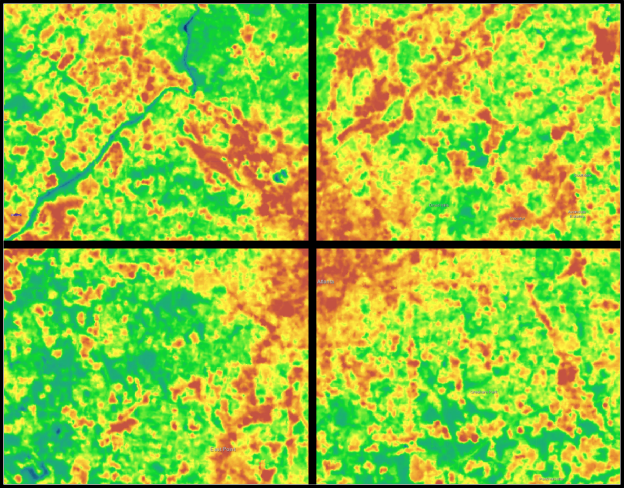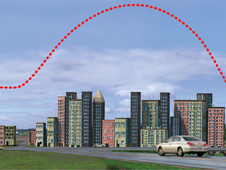Mini Lesson/Activity
A Mini Urban Heat Island
Overview
Conduct this modified EO Kids mini-lesson with your students to explore the phenomenon of Urban Heat Island Effect.
Student Directions
Materials
For each student/group:
- infrared thermometer (available from hardware stores for about $20)
- pencil
- data table
- five different types of materials found outside: grass, pavement (driveway, road), sidewalk, plant (tree or bush), and bare soil

Steps
-
Using the infrared thermometer, measure the temperature of each material during the day when it is in direct sunlight. Record the temperature for each object in the first row of the data table.
DATA TABLE
plant
grass
soil
pavement
sidewalk
temperature in the sunlight (°C) temperature in the shade (°C) difference in temperature (°C)
- Measure the temperature of each surface in the shade. Record the temperature for each object in the second row of the data table.
- Subtract the temperature of each material in the shade from the temperature observed during daylight. Record this temperature difference in the bottom row of the data table.
- Answer the following questions.
- Which materials get the hottest in the Sun?
- What is the temperature range of the materials in the Sun? Why do you think there is a difference?
- What is the temperature range of the materials in the shade? Is the range of temperatures similar or different from the temperatures in the Sun? Why?
Credit: This activity was modeled after the NASA's EOKids - Urban Heat Islands: Hot Times in the City activity.
Teacher Note
If students cannot do day and night, this can be modified for early morning and later in the day. Other options are surfaces in direct sunlight and shadows, cloudy versus clear days or adding more surfaces.
Teachers, these mini lessons/student activities are perfect "warm up" tasks that can be used as a hook, bell ringer, exit slip, etc. They take less than a class period to complete. Learn more on the "My NASA Data What are Mini Lessons?" page.
Teachers who are interested in receiving the answer key, please complete the Teacher Key Request and Verification Form. We verify that requestors are teachers prior to sending access to the answer keys as we’ve had many students try to pass as teachers to gain access.






